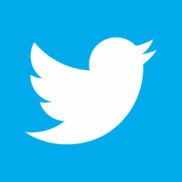Twitter and the Paradox of Following and Trending

Chapter Four opened with a quote from Twitter founder Jack Dorsey from 2009 where he hoped Twitter would become a utility used every day for communication like text messages, phones, and email. José van Dijck (2013) noted that Twitter's original nature was to create an open space for everyone to communicate about everything. However, over time a hierarchical structure emerged as certain users, tweets, and trends gained prominence. Twitter's self-promotion as a digital town hall has the potential to manipulate opinions rather than promote them.
As a technology platform, Twitter had to manage its origins from being the short message service (SMS) of the Internet to being the voice of everyone on the Internet. The original 140 character limit was because of the SMS limitations of phone carriers. But this special limitation does not slow the frequency with which users post to the site. Wikipedia lists nine "notable uses" for Twitter, one of which, protest and politics, aided in the 2009 Iranian uprising, the Arab Spring in 2010, and the Occupy movement of 2011. These moments served as examples of "users' empowerment through social media—citizen's [sic] taking hold of their own communication and propaganda channels to challenge the power of conventional gate keepers such as governments and news organizations" (p. 75). While it can be empowering for users and such moments, it can also be self-empowering through self-promotion as celebrities and high-profile users speak to their "followers" directly.
The content of tweets required a structure that resembles a quote taken from a source and not a line written from a journalist. Van Dijck believed that it was not so much the "weight" of a tweet's content that moved followers, but it was more of "the message's expressive and personal nature" (p. 77). This content has turned the tweet flow into an uninterrupted and uninhibited source of content that was different than television and other media. Essentially, more people check their Twitter accounts before checking broadcast news.
In 2011, CEO Dick Costello began referring to Twitter as an "information network" rather than a social networking site (SNS) (van Dijck, 2013, p. 79). This shift moved beyond founder Jack Dorsey's early claim of Twitter being a utility. If the focus was now information, ownership played a key role as Twitter tried to balance the same issues Facebook had to deal with: providing a service that meets the needs of its users while not undermining privacy and directing discussions towards advertising for profit. When it took over TweetDeck in 2011, Twitter made it clear it was going to monetize content and control and direct various content to and from users. This business model was initially resisted by Twitter, but van Dijck pointed out that building on this model invoked a "paradox" as perceptions of Twitter as a natural platform were unreal (p. 82). In reality, the model's "mechanisms promote engineering and manipulation" (p. 82). The forum was originally intended for individual users, but under this business model, the forum was now being controlled by corporations.
Unlike Facebook, Twitter's terms of service have been fairly straightforward with a clear line of protection between users and third-party developers. There was no misconception about privacy for Twitter users, unlike the dilemma of Facebook users. However, the governance of this data took some criticism when in 2012 Twitter announced it would "comply with each country's laws and censor tweets per region, whereas previously Twitter would only block tweets or accounts globally" (p. 83). Van Dijck noted that within the past six years, Twitter has gone from a company that was trying to create a natural space for voices as the foremost online public forum, to a company that has to obey the laws of countries where it wants to attract new customers.
The future of Twitter is a precarious one as its "fate is dependent on its interoperability with other microsystems" and managing monetary expansion without alienating users (van Dijck, 2013, p. 88). And while it may have been the most prominent SMS at one point, over time Twitter is slowly becoming the foregrounded SNS as new users flock to it daily from Facebook. What van Dijck failed to point out is that the future of SNS will be fought between these two titans, and that in the end, perhaps neither will be left standing given the fickle nature of social media users.